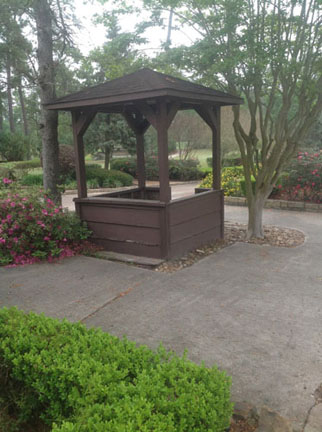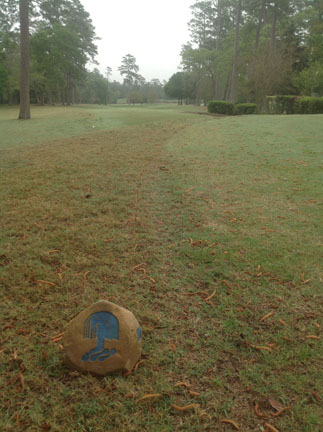
 |
Upon entering the golf course of Willow Creek, signs direct the individual to parking that only may enter one way and exit another. From this point, the player is then directed by more signs to the "golf shop" where the check-in and payment occurs, possibly even buying the merchandise in case one needs a new glove or perhaps new, expensive golf shoes. If the individual is a member of this private golf course, the member pays monthly fees in order to have unlimited course accessibility with range facilities. In either case, upon entering the golf shop, it is already assumed that the individual has made a tee-time to even have the opportunity to get out on the course. In case the individual has allotted time to warm up, three different practice ranges at all distances are available for use and the player may make their way to pick up a golf cart or a roll cart to walk with their bag. |
| Once the tee time begins, the player is supposed to check-in once more with a golf marshal who is located near the first and tenth tee boxes in a gazebo-type structure. Signs are also located to find the beginning of these holes, if the individual is not a regular member of the course. Once given the "good-to-go" signal from the golf marshal, the player may tee off from their designated tee box. The colors of the tee boxes range from course to course, but for Willow Creek the colors begin from the blue tees, which are the furthest away from the hole. This tee box is for golf professionals and skilled men with low handicaps. Moving forward are the white tee boxes that are made for men with middle to high handicaps. Not usually, but Willow Creek has a green tee box which is typically made as "senior" tees located between the white tee boxes and the women's red tee boxes. Finally, with the shortest distance to the hole lies the red women's tee box. |  |
 |  |
 |  |
 |
As pictured, a "90 degree rule" staked sign resides beside the beginning hole. The 90 degree rule means that if the individual wants to drive out upon the grass fairway, they have to follow the cartpath until they are at a 90 degree angle with their ball before they may drive on the grass. This typically happens after a rain to preserve the grass fairways. If one did not know the sport or have a rulebook on hand, one would not know this meaning, thus once again reinforcing this "outsider" feeling. Gillian Rose states that museums and galleries "produce a certain sort of visitor," as well as "producing the images and objects in their possession in particular ways" (Rose, 251). The same concept can be applied to the layout of a golf course. These signs, both implicit and explicit move the player throughout the course in a very particular manner, just as visitors of a museum are guided in a very set way. |